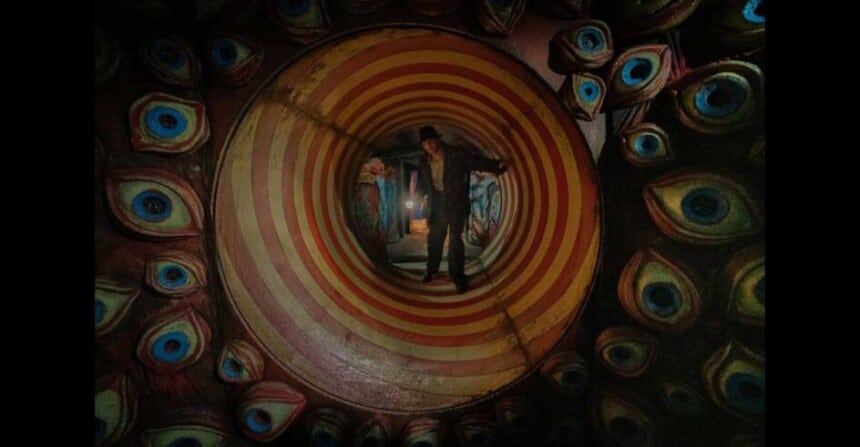Academy Award-winning filmmaker Guillermo del Toro returns with a remake of the 1947 neo-noir psychological thriller “Nightmare Alley”. The film takes place in 1939 and centers around a carnival worker named Stanton Carlisle (played by Bradley Cooper).
He works with a clairvoyant act Madam Zeena (played by Toni Collette) and her husband Pete (David Strathairn). After learning some elaborate coded messages and hand gesture techniques, Stanton flees to the town and becomes a successful psychic act within two years. Stanton doesn’t hesitate to steamroll other people to gain more fame and wealth, but that comes at a great cost.
Cinematographer Dan Lausten teams up with Guillermo del Toro for the third time after his outstanding works in Crimson Peak and The Shape of Water. Tamara Deverell does a tremendous job with the lavish production designs which cascades with opulence as well as misery.
The movie has an unsettling tone and some really gory elements. Nightmare Alley is narratively ambitious but there is a lack of authenticity to the characters. From Del Toro’s standard, Nightmare Alley is, unfortunately, one of his weakest when it comes to the storytelling involving such a weighty theme.
The editing by Cam McLauchlin is plodding and tedious. At Least thirty minutes of the movie could’ve been easily discarded to make it a truly engaging neo-noir psychological thriller.
Willem Dafoe plays the role of an unscrupulous carnival owner Clement Hoatley who lures aimless men with fake promises of temporary jobs and opium-laced alcohol, he takes advantage of their dependency to create carnival geeks. Toni Collette as the clairvoyant act Madame Zeena could’ve been given more screen time. Both Collette and Willem Dafoe’s potentials are enormously wasted.
Rooney Mara’s performance and characterization are a hit and miss. Cate Blanchett is the obvious casting choice as the femme fatale psychologist Dr. Lilith Ritter. Blanchett brings a new life to the movie with her mystifying entrance, but even her motive is quite hazy and restrained at the end. Bradley Cooper as Stanton Carlisle shines in the final scene.
Despite having a star-studded and supremely talented cast, Nightmare Alley suffers from pacing issues. The build-up in the third act is lukewarm, every conversation feels too long while lacking intensity and emotions. Bradley Cooper’s top-notch acting in the final scene can’t save the film as a whole.
Nightmare Alley is a classic case of style over substance and depth. The plot is relatively simple and heavily relies on foreshadowing, but the scriptwriting tries to make it seem complex and covers unnecessary details in the process.
Like every Guillermo del Toro film, Nightmare Alley is without any doubt a visual spectacle. However, the storytelling and execution are lack-lustrous with an unjustifiably prolonged run time. Despite everything, the positive aspects do outweigh the negative ones. Nightmare Alley deserves a watch for Guillermo’s signature green-hued visuals and Bradley Cooper’s phenomenal acting in the final shot.
Rating: 7.5/10










